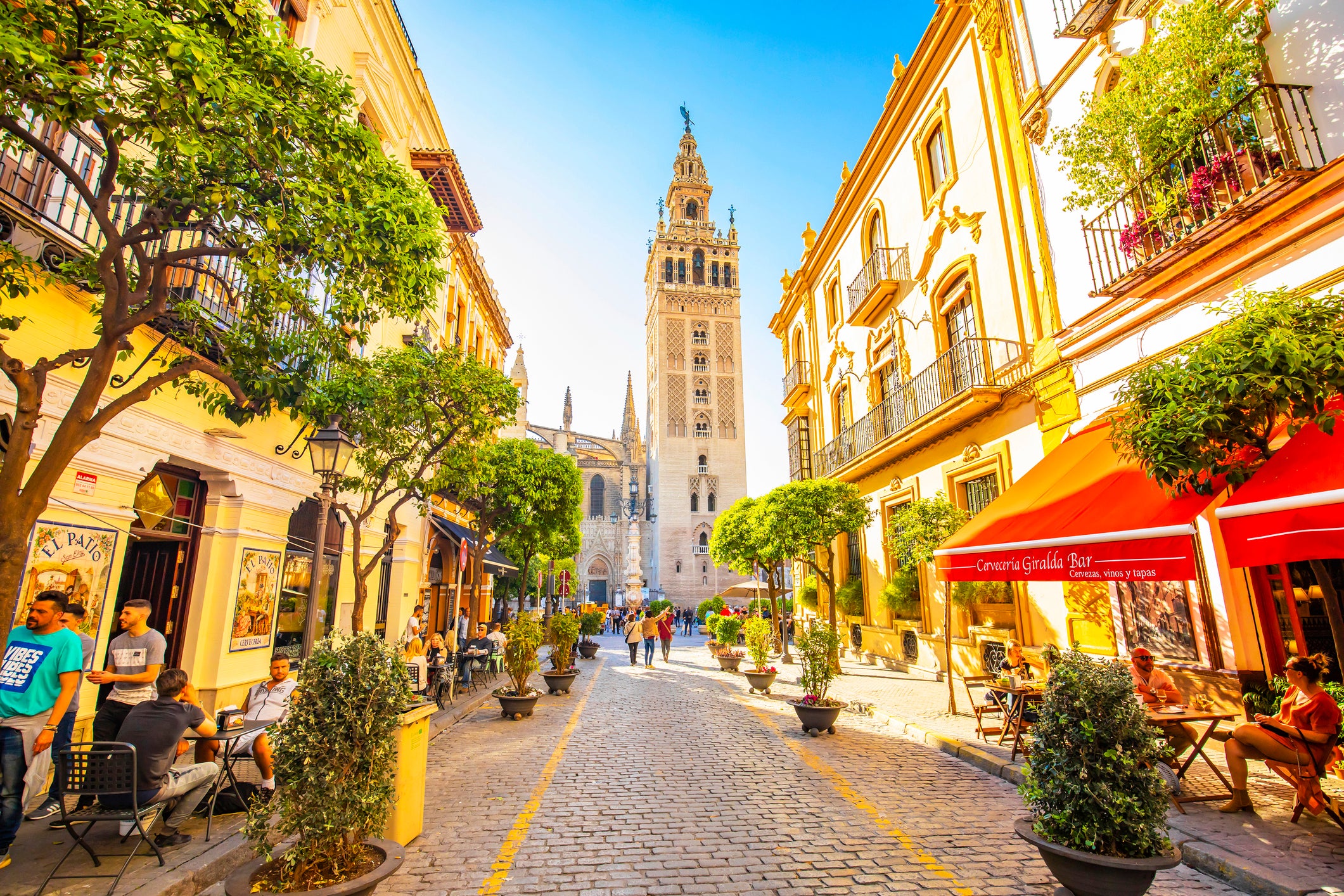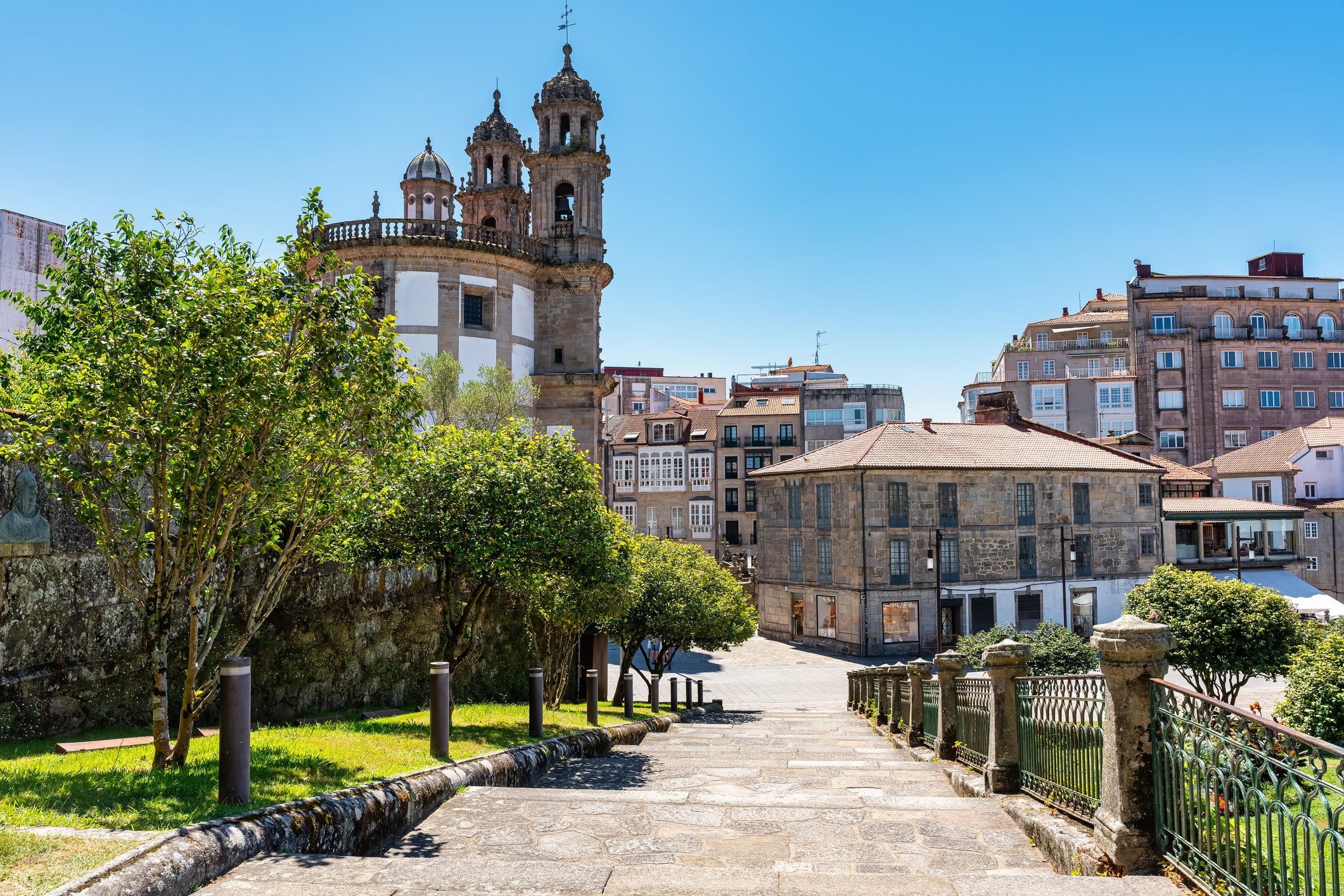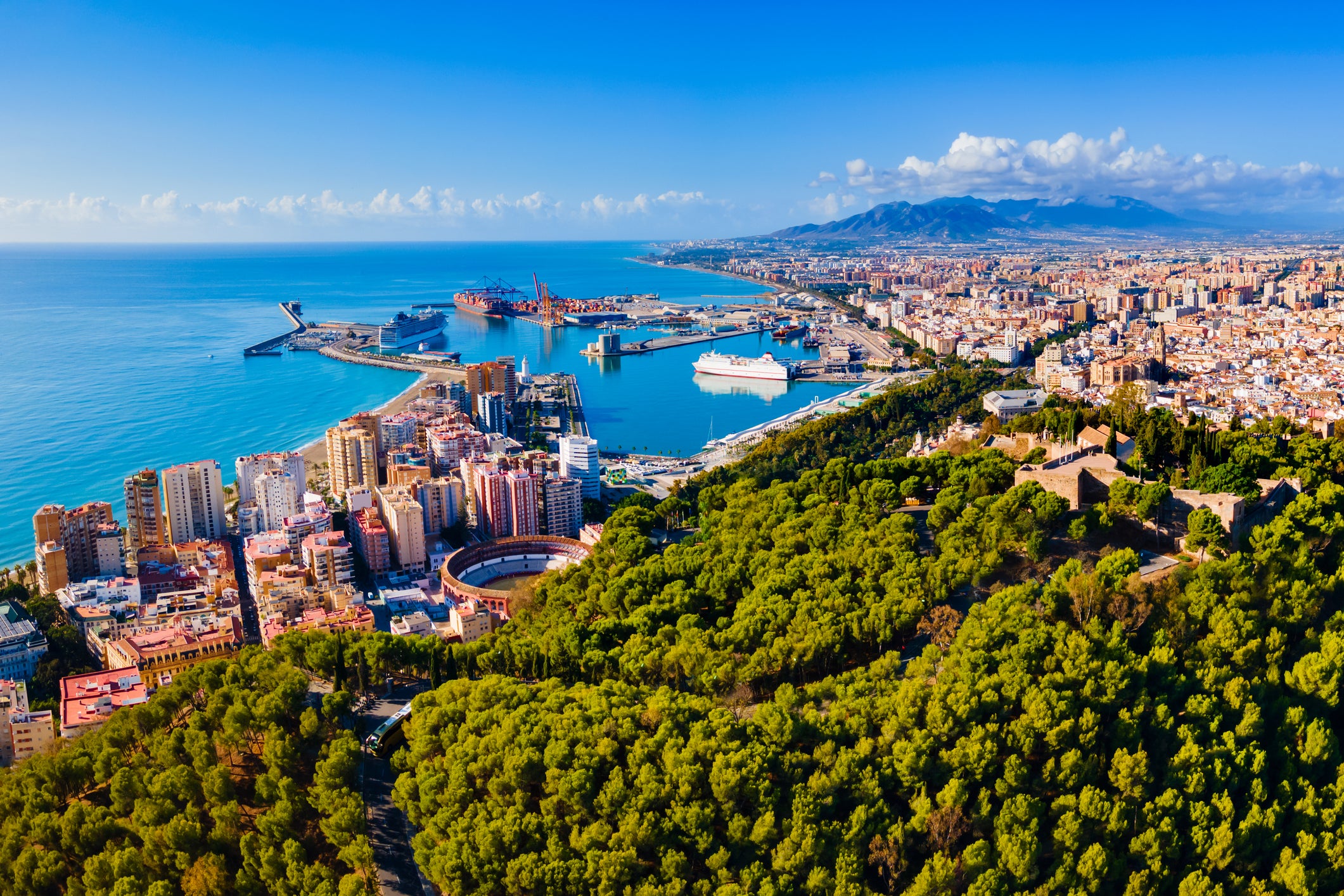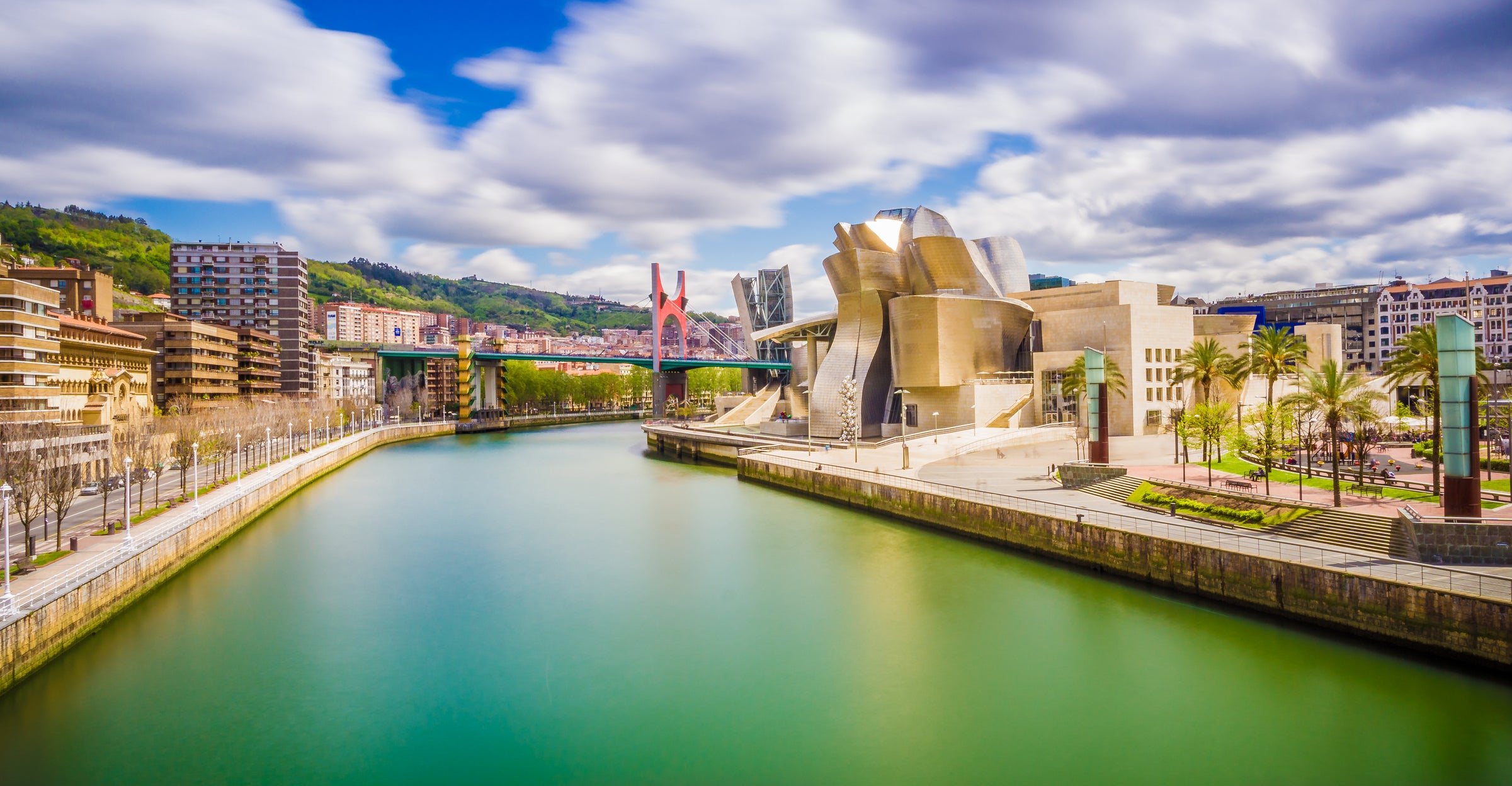Spain has a thriving taxi industry, but drivers might have to work a little harder for fares in these locations.
Say “hola” to five of the country’s most walkable cities, destinations where the sights are just minutes apart and pedestrians come first.
One has even banned cars from the center, with delivery vehicles allowed in only at set times and limited to 6mph.
These cities are worlds within worlds, where Unesco-listed cathedrals can be found right next door to spectacular museums and restaurants serving mouthwatering dishes made with the freshest local flavors.
Lace up your walking shoes and dive down twisting alleyways in ancient neighbourhoods, soak up the intoxicating atmosphere in vibrant squares, and check into one of our recommended hotels to recharge and do it all again the next day.
1. Seville

It takes mere moments to travel using leg power between the major sights and spellbinding neighborhoods in Seville, one of Spain’s most beautiful and walkable cities.
But it’s a hotspot in every sense, regularly baking in searing heat.
With a location deep inland in the Guadalquivir Valley, far from the cooling effect of the sea, summer temperatures often exceed 104F and the mercury can rise above 80F even in spring and autumn.
So, no hotfooting if you visit between May and October. Keep the pace leisurely.
The marquee attraction is the 16th-century Unesco-listed Seville Cathedral, famous for housing the tomb of Christopher Columbus and for its colossal size. With a total area of 124,000 sq ft, it’s the largest Gothic cathedral and the third-largest church in the world by volume, smaller only than St. Peter’s Basilica in the Vatican and the Basilica of Our Lady Aparecida in Brazil.
Inside is the largest altarpiece in Christendom and the entrance to a series of ramps leading to the summit of the 300-foot-tall Giralda bell tower, which once belonged to the 12th-century Great Mosque of Seville (largely demolished in the 15th century to make way for the cathedral). The view from the top is breathtaking.
Next door is the Real Alcázar of Seville — a royal palace, another Unesco World Heritage Site and filming location for Game of Thrones. This former 10th-century fort, following several major makeovers, most notably by King Pedro in the 14th century, is now an architectural masterpiece, wowing all-comers with sublime courtyards and gardens.
The palace opens directly into the city’s most magical barrio (neighborhood) — Santa Cruz, the former Jewish quarter and a maze of bewitching, flower-filled alleys.
A few minutes from here is Seville’s third Unesco site, the General Archive of the Indies. This vast repository houses six miles of bookshelves stacked with 80 million pages of documents dating from the 15th to the 19th centuries that trace the rise and fall of Spain’s empire in the Americas.
Just 10 to 15 minutes away are the stunning Plaza de España (which you may recognize from Star Wars: Episode II – Attack of the Clones) and Parque María Luisa, the city’s oasis.
Sate your hunger pangs and keep the historical vibe buoyant with dinner at El Rinconcillo in the Casco Antiguo (Old Town). Founded in 1670, it carries the well-founded reputation of being the oldest bar in Spain and serves classic Andalusian tapas.
How to get there
Fly to Madrid, then take a high-speed train to Seville. Advance fares cost from just €7/$8 and the journey time is two hours and 30 minutes.
Where to stay
Hotel Boutique Casa del Poeta is just 800 feet from the cathedral, hidden in a Santa Cruz district alley. A former 17th-century mansion, the property enchants with elegant rooms built around a central patio with a fountain.
Read more: Welcome to the Portuguese archipelago paradise — where natural phenomena blend with hotels and restaurants
2. Granada, Andalusia

The compellingly compact city of Granada, set 2,250 feet above sea level in southern Spain’s Sierra Nevada mountains, is a joy to explore on foot, but its inclusion in this list comes with a caveat – it’s a steep climb to one of the best sights.
Most of the premium attractions are within easy walking distance of each other on gently undulating terrain. A good place to start is Carrera del Darro, the ancient city’s prettiest promenade and centrally positioned. A stroll along it will take you past the remains of Arab houses – Granada was a Muslim capital for eight centuries – picturesque bridges and old convents.
Granada Cathedral, a Spanish Renaissance masterpiece, is close by. Inside are gilded Baroque organs, vast canvases by Alonso Cano depicting the life of the Virgin Mary, and a general sense of grandeur.
Next door is the historically fascinating Royal Chapel, home to the ornate marble tombs of Queen Isabella I of Castile and King Ferdinand II of Aragon.
From here, it’s a five to 10-minute walk to the seductive Arab quarter, Albayzín – a veritable living museum formed from labyrinthine cobbled streets lined with palatial houses.
Climb for about 15 to 20 minutes through this magical maze to reach Mirador de San Nicolás, a knock-out viewpoint offering a panorama of the Sierra Nevada range and the red-walled Alhambra palace complex, which perches on a narrow promontory known as Sabika Hill, 2,756 feet up.
Reaching it on foot involves a thigh-straining walk through cypress and elm woods, either from Plaza Nueva or Paseo de los Tristes.
The reward? The chance to explore the eye-opening legacy of the Nasrid Dynasty, an intricately decorated Unesco World Heritage Site whose origins date back more than 700 years.
As you wander from patios to reflective pools, and from fountains to lush gardens, that strenuous walk will seem like a distant memory.
Don’t forget to climb the Torre de la Vela (watchtower) for sensational 360-degree panoramic views.
Afterwards, immerse yourself in the here and now with a meal at María de la O, which showcases flavors of the region in imaginative dishes that use local produce.
How to get there
Fly to Madrid, then hop on a high-speed train. The journey time is around three hours and 15 minutes and costs from around €40–€80 ($47 to $94).
Where to stay
The Luxurious Hotel Palacio De Santa Paula, a two-minute walk from Granada Cathedral, occupies a former 14th-century Casa Morisco (Moorish house), and 16th-century Santa Paula Convent. A stay here is simply heaven.
Read more: Murdered guests, unsettling smells and Stephen King’s inspiration: Welcome to the spookiest hotels in the US
3. Pontevedra, Galicia

Pontevedra, a coastal city in the northwestern corner of Spain, is a pedestrian’s paradise — cars have been banned from its center since 1999, and walkers now sit at the top of the mobility hierarchy, ahead of cyclists and public transport.
There’s even a subway-style map that indicates walking routes and times between points of interest, stations, riverside walks and car parks.
Vans and couriers are permitted to enter the center, but only at set times and along designated routes, and at a slow jogging pace (6mph).
Tighten your shoelaces and begin your exploration in the fume-free historic center, where noble stone mansions with enclosed glass balconies (galerías) stand proud amid arched arcades and monuments.
Praza da Leña, a beautiful medieval square, makes for an inviting starting point. From here, enter the heart of the city, Praza da Ferraría (also known as Praza da Herrería, or Square of the Blacksmiths), a magnificent, vibrant square featuring the Convent of San Francisco, a 16th-century fountain and bustling cafes where you can pause for premium people-watching.
Adjacent to the square is the Church of the Pilgrim Virgin (Igrexa da Virxe Peregrina), an elegant 18th-century chapel with a distinguished scallop-shell-shaped floor plan symbolizing its role in the Camino de Santiago pilgrim route. The scallop shell represents the network of paths that converge at the end point — Santiago de Compostela, the capital of Galicia.
A 10-minute walk north brings you to a site that will transport you back to the 13th century – the evocative Ruínas de San Domingos (Ruins of Santo Domingo). This former convent, founded around 1282, is now a National Monument and one of the six buildings, scattered through the old town, that make up the Museum of Pontevedra.
At the ruins, visitors are invited to peruse sarcophagi, heraldic shields, and medieval sepulchres, while the other sites house treasures that include the largest collection of prehistoric gold pieces in Europe and Spanish works of art from the 19th and 20th centuries by the likes of Salvador Dali and Francisco de Goya.
Weave for half a mile from here through the historic core to one of the city’s most iconic sights – the Ponte do Burgo (Bridge of the Burg), which spans the Lerez River and dates to medieval times (though some say Roman).
It’s a key crossing point on the Camino de Santiago pilgrimage, so you may be joined by a few backpacking pilgrims as you gaze at the surrounding cityscape.
After a taste of the city vibe, it’s time to sample the local food, so head to Bar Estrella, just off Praza da Ferraría, for some scallops (naturally), Galician croquettes and a glass of sangria.
How to get there
Fly to Madrid and hop on a direct high-speed train to Pontevedra for as little as €20/$24. The journey takes three hours and 35 minutes.
Where to stay
The Parador de Pontevedra, set in a magnificent 16th-century palace in the heart of the old town, lets you live like Galician nobility. Features in this former residence of the Counts of Maceda include a landscaped garden and opulent rooms furnished with antiques.
Read more: Forget Paris: Five overlooked French cities you can reach by high-speed train (from just $13)
4. Malaga

It takes mere moments to stroll to Málaga’s top sights, a sun-drenched coastal city that wears many hats — gateway to the Costa del Sol and mecca for beachgoers, shopping paradise, and cultural hotspot.
The latter not least because it’s the birthplace of Pablo Picasso. So it’s only fitting to begin an exploration of this dynamic city at the Picasso Museum Málaga in the historic centre.
The museum houses an impressive 204 works spanning the artist’s eight-decade career, including Portrait of a Bearded Man, The Three Graces and Jacqueline Seated.
From here, walk south-east to the Alcazaba and Roman Theatre and you’ll travel much further back in time, with these extraordinary ancient monuments — built side by side — revealing how Málaga was assembled and reassembled over more than 2,000 years.
The Alcazaba is an 11th-century Moorish palace-fortress complete with bubbling fountains and jasmine bushes, while the Roman Theatre, buried underground until its discovery in 1951, was built during the reign of Emperor Augustus in the 1st century and remained in use until the 3rd. Parts of the theatre were later repurposed by the Arabs in constructing the Alcazaba.
Get another history fix at magnificent Málaga Cathedral, easy to spot as it’s visible from almost anywhere in the city. You’ll notice that only one of the twin towers flanking the entrance has been finished — hence the locals’ nickname, La Manquita (The One-Armed Lady).
The completed tower rises 285 feet, making it one of Spain’s tallest cathedrals. Inside, it’s an absolute treasure trove, home to spectacular stained-glass windows, sculptures dating back to the 15th century, and a pair of grand organs with 10,000 pipes between them.
From the cathedral, the main shopping street — Calle Marqués de Larios — is just a short stroll away. This grand 19th-century boulevard blends Neoclassical and Art Deco styles and is home to brands including Massimo Dutti, Victoria’s Secret and Swarovski.
Cool off with a dip in the Mediterranean before heading to Picasso Bar Tapas for classic local dishes such as Malagueñan sardines and porra antequerana, a thick, cold tomato soup.
How to get there
Fly non-stop with United Airlines from Newark Liberty International Airport in New Jersey. If flying into Madrid, hop on a high-speed train. The journey time is just two hours and 42 minutes, with tickets from just €7/$8 if booked well in advance.
Where to stay
Palacio Solecio, a few steps from the Picasso Museum, is set in an 18th-century Andalusian palace with rooms fit for aristocracy. Highlights include a rooftop pool and free wifi.
Read more: 72-hour escapes to Europe: Six itineraries to see the best sights
5. Bilbao

Bilbao in northern Spain is a heady mix — a once-gritty port city transformed into a leading cultural hub of the Basque Country and home to one of the world’s most celebrated museums.
And it’s eminently walkable, with most major sights reachable within 30 minutes on foot from the historic Old Town (Casco Viejo), known locally as the “Seven Streets” neighborhood.
These avenues — Somera, Artecalle, Tendería, Belosticalle, Carnicería Vieja, Barrencalle and Barrencalle Barrena — are home to a bewitching array of shops and pintxos (Basque tapas) bars.
From here, follow your nose to Mercado de la Ribera, Europe’s largest covered market, located a three-minute walk away on the bank of the Nervión River. Around 180 stalls selling everything from fresh seafood and local cheeses to Iberian hams and olives are spread over three floors. Stock up for a picnic, then relax at the river-view café-bar.
The elegant Arriaga Theatre lies across a nearby bridge, and from there it’s a scenic 20-minute walk along the Nervión River and over the futuristic Zubizuri Bridge to the jewel in the crown of Bilbao’s cultural offering — the sensational Guggenheim Museum Bilbao, credited as lifting the city out of a post-industrial depression.
This shimmering sculpture-like building houses major pieces from artists like Mark Rothko, Anselm Kiefer, and Jenny Holzer, along with the showstopping Matter of Time installation by Richard Serra, where visitors walk through mesmerizing, twisting steel sculptures.
Chew over your discoveries at restaurant Los Fueros, which has been serving up mouthwatering Basque cuisine since 1878.
How to get there
Fly to Madrid, then take a train for as little as €7/$8 if booked in advance. The journey takes around four and a half hours.
At the time of writing, United Airlines is scheduled to launch a seasonal direct route from Newark, New Jersey, to Bilbao, running from May to September.
Where to stay
Bilder Boutique Hotel is practically next door to the Arriaga Theatre in the Old Town, making it an excellent base for acquainting yourself with the delights of the city’s most charming avenues.
Read more: European towns and villages that look like a Disney movie





